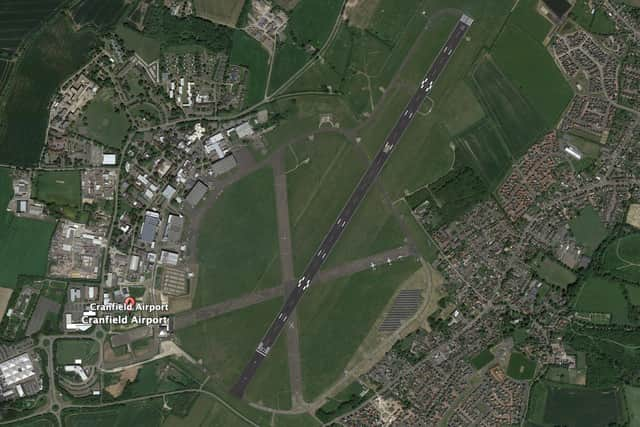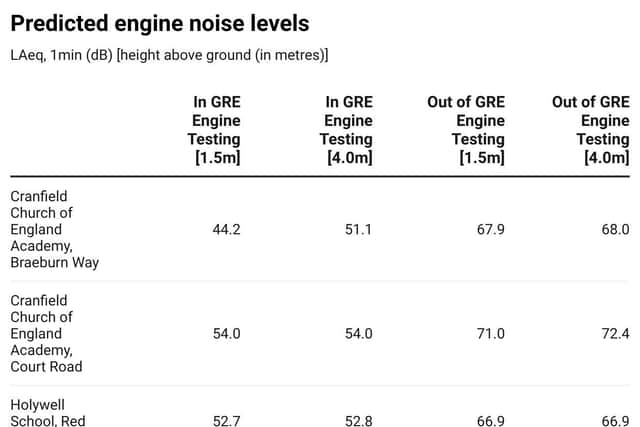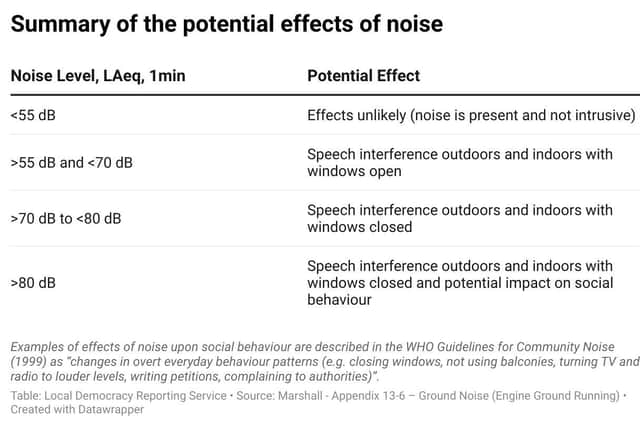Open air engine testing at Cranfield will be 'very rare' says Marshall Aerospace
and live on Freeview channel 276
Marshall has said any open air engine testing at Cranfield Airport will be “very rare” as the majority of the testing will be in a purpose built enclosure.
The aerospace business is planning to move from Cambridge to Central Bedfordshire to “invest in the long-term future of the company”.
Advertisement
Advertisement
As part of its outline planning application, Marshall is seeking to test Hercules C-130 engines for up to 500 hours a year within a Ground Run Enclosure (GRE) facility.


However, the application says that there may be times when testing has to be carried out outside of the GRE, and the company is seeking permission for up to 25 hours a year to hold tests in the open.
A spokesperson for Marshall said: “There are very rare occasions when engine testing will need to be undertaken outside the proposed GRE.
“The occasions are most likely to occur during meteorological conditions which would not enable sufficient airflow through the aircraft engines, or during periods of planned for or, in particular, unplanned, GRE maintenance.”
Advertisement
Advertisement
The spokesperson said there have been only six such tests at Cambridge between 2019 and 2021.


The company is “anticipating” that Central Bedfordshire Council will seek to agree planning conditions to ensure that out of GRE testing is infrequent and managed to minimise effects on the local community.
The spokesperson said: “The location of any unavoidable out of GRE testing, will alternate, where possible, between locations across the airfield.
“This will seek to ensure no single receptor location or community is always exposed to the highest noise levels at the time when these activities have to occur.
Advertisement
Advertisement
“Noise from an engine test is not continuous, as the engine test includes periods when the aircraft engines are running at low power with lower associated noise emissions, and periods when the engines are running at high power with higher associated noise emissions.


“A majority of engine tests include mainly low power engine testing, with shorter periods of high power engine testing, typically equating to a maximum of three periods of around 8-10 minutes.
The spokesperson said the noise data provided in its Environmental Statement (ES) shows out of GRE noise levels for a hypothetical aircraft location.
“This scenario is primarily presented for context to show the benefits of aircraft engine testing within the proposed GRE when compared to outside the GRE,” the spokesperson said.
Advertisement
Advertisement
Cranfield’s schools are included in the list of noise receptors, as shown in the summarised table.
Marshall said it is “committed” to undertake field investigations to find the optimum locations and aircraft orientations from a noise perspective for out of GRE testing.
“This would be a rare occurrence, and potentially only for a matter of minutes,” the spokesperson said.
“As explained within the ES, we do not attribute significance to these effects given they will be so infrequent, and for the same reason out of GRE testing was not a component of the consultation.”
Advertisement
Advertisement
More information on the application can be found on Central Bedfordshire Council’s planning portal, reference CB/22/04299/OUT.
The consultation period is over but residents can still comment by email [email protected] until the day before the application is discussed by the council.
Those wishing to comment must include their name, address and the reference CB/22/04299/OUT otherwise the comments won’t count.
The schools were approached for a comment but did not respond at the time of publication.